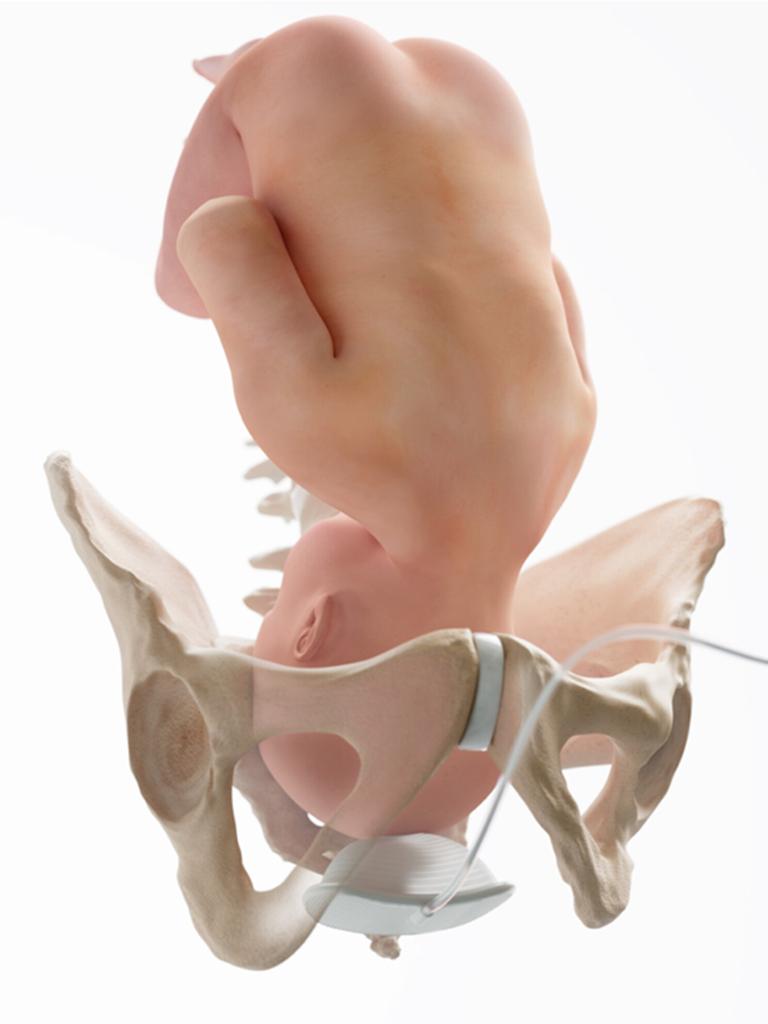Caesarean birth tool developed by Flinders Uni to cut brain damage
A new tool developed by an Adelaide uni could cut the risk of brain damage and death linked to Caesarean births, experts hope, as rates for the procedure hit new record highs.
SA News
Don't miss out on the headlines from SA News. Followed categories will be added to My News.
As Caesarean births hit record levels Flinders University is developing a new tool to help with the risk of brain damage or death where a late term baby’s head becomes wedged in the mother’s pelvis.
It comes as data on South Australian women giving birth shows a majority are now listed as having “an unhealthy weight”, with fewer teenage mums and more aged 35 and over than in the past with associated birth risks.
Efforts to deliver late term babies in Caesarean emergencies where the head is wedged range from having an assistant push the baby’s head upwards, to delivering the baby feet first, medication to relax the mother’s womb and using an inflatable balloon device known as a foetal pillow to elevate the baby’s head from below.


Flinders University midwife Professor Annette Briley is part of a team developing a new device called the Tydeman tube, a hollow silicone tube inserted via the vagina to elevate the baby’s head with minimal pressure while reducing the suction effect by allowing air to flow in as the head moves.
More than one third of mothers in Australia now have a Caesarean birth. In South Australia in 2020, a record 36.8 per cent of women who gave birth had a Caesarean birth — a record 19 per cent were emergencies.
SA Health data showsfrom 2014 to 2020 the number of new mothers regarded as overweight has rocketed from 44 per cent to 57 per cent.
Those aged 35 and over accounted for 23.9 per cent, up from 20.6 per cent in 2014 – and just 4.6 per cent back in 1981.
In around 10 per cent of emergency Caesarean births the baby’s head is wedged — known as impacted foetal head (IFH) — making it difficult for the doctor to get a hand below the head to deliver it.
While the majority of babies born following IFH sustain minor damage, recent data shows 2 per cent die or suffer serious injuries.
A UK report found 9 per cent of avoidable brain injuries at birth are caused by IFH and other complications include skull fractures, haemorrhages and eye injuries.
Complications for mothers include blood loss, infection risk, bladder and urinary tract damage, uterine tears or a hysterectomy.
Prof Briley said global data shows a significant rise in Caesarean births in late labour and associated cases of IFH-related injuries in recent years.
“A minimal number of Tydeman tubes have been used clinically,” she said.
“Further research in a clinical setting, compared with appropriately trained and executed manual disimpaction, is required to investigate its efficacy and safety before use.”
A paper published in BJOG: An International Journal of Obstetrics & Gynaecology by the Royal College of Obstetricians & Gynaecologists in the UK and Prof Briley reports maternity staff use a variety of approaches and there is no consensus on training for management to help deliver the such babies.
Most commonly, an assistant is asked to push up from below.
“The aim of this scientific impact paper was to examine all the current available evidence regarding different manoeuvres and devices currently in use to manage IFH, with the results integrated into the findings of a systematic review commissioned by the National Guideline Alliance (UK),” Dr Briley said.
Originally published as Caesarean birth tool developed by Flinders Uni to cut brain damage








